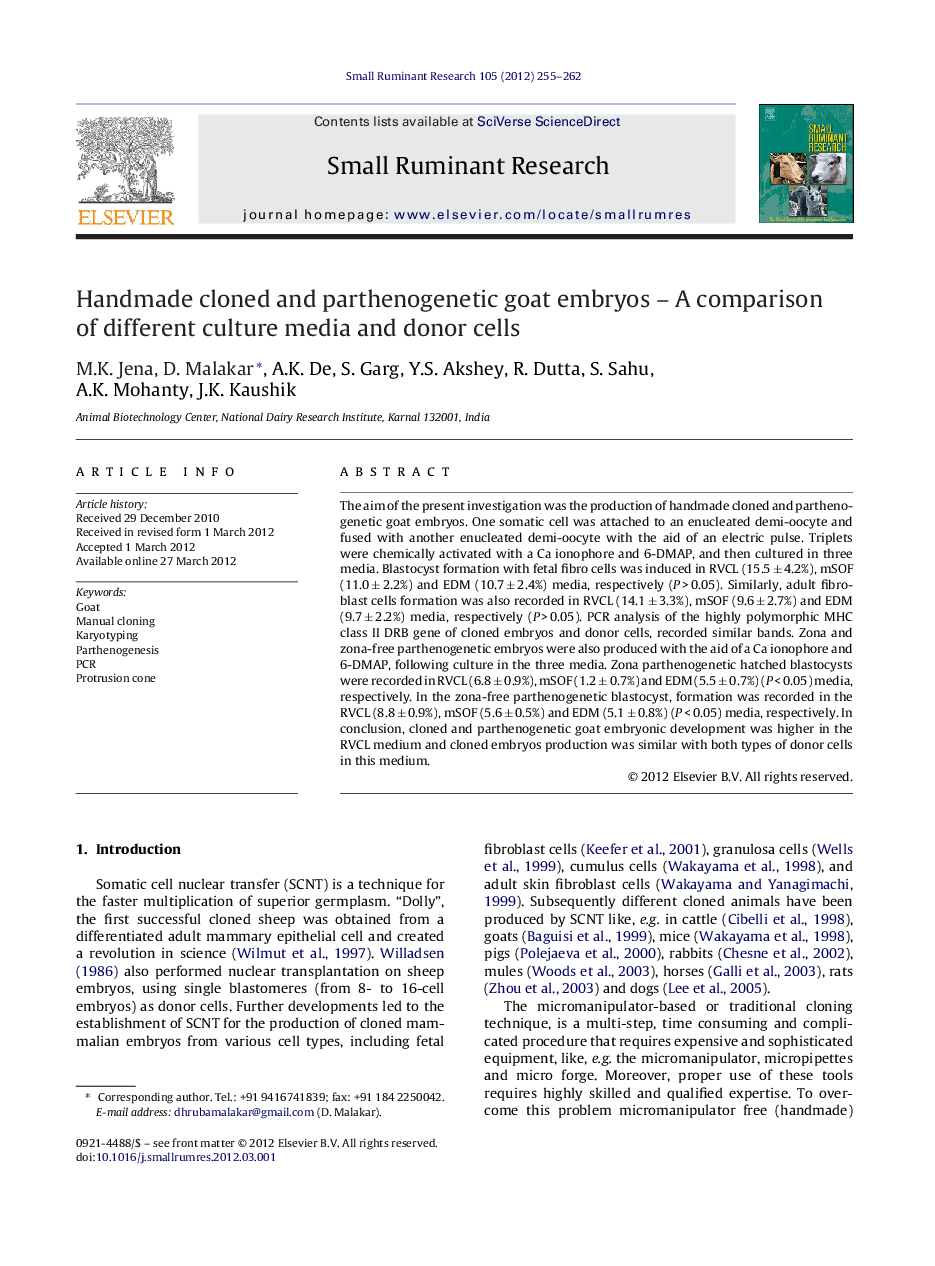| Article ID | Journal | Published Year | Pages | File Type |
|---|---|---|---|---|
| 5796166 | Small Ruminant Research | 2012 | 8 Pages |
The aim of the present investigation was the production of handmade cloned and parthenogenetic goat embryos. One somatic cell was attached to an enucleated demi-oocyte and fused with another enucleated demi-oocyte with the aid of an electric pulse. Triplets were chemically activated with a Ca ionophore and 6-DMAP, and then cultured in three media. Blastocyst formation with fetal fibro cells was induced in RVCL (15.5 ± 4.2%), mSOF (11.0 ± 2.2%) and EDM (10.7 ± 2.4%) media, respectively (P > 0.05). Similarly, adult fibroblast cells formation was also recorded in RVCL (14.1 ± 3.3%), mSOF (9.6 ± 2.7%) and EDM (9.7 ± 2.2%) media, respectively (P > 0.05). PCR analysis of the highly polymorphic MHC class II DRB gene of cloned embryos and donor cells, recorded similar bands. Zona and zona-free parthenogenetic embryos were also produced with the aid of a Ca ionophore and 6-DMAP, following culture in the three media. Zona parthenogenetic hatched blastocysts were recorded in RVCL (6.8 ± 0.9%), mSOF (1.2 ± 0.7%) and EDM (5.5 ± 0.7%) (P < 0.05) media, respectively. In the zona-free parthenogenetic blastocyst, formation was recorded in the RVCL (8.8 ± 0.9%), mSOF (5.6 ± 0.5%) and EDM (5.1 ± 0.8%) (P < 0.05) media, respectively. In conclusion, cloned and parthenogenetic goat embryonic development was higher in the RVCL medium and cloned embryos production was similar with both types of donor cells in this medium.
